




マイクロプラスチック汚染への取り組みは、小さなプラスチック片に対処するだけではありません。環境中で見つかるマイクロプラスチックは、プラスチックポリマーからなる小さなサイズの粒子を含むだけではなく、化学物質を環境中に溶出させたり、有害化学物質(Campanale et al, 2020; Koelmans et al., 2016)や有害元素(Igalavithana et al., 2022; Akhbarizadeh et al., 2018)、病原体を含む微生物(Oberbeckmann et al., 2018; McCormick et al., 2014)などを媒介する存在として作用することにより、多様な汚染物質として機能します(Rochman et al., 2019)。マイクロプラスチック汚染が生態系と人間の健康に与える影響は多くの研究により証拠が示されており、こうした研究の証拠は、さらなる資金調達の優先順位、環境政策、水質や環境衛生および人間の健康へのリスクに対する一般の認識に影響を与えています。そのため、環境マイクロプラスチックの研究データがfindable, accessible, interoperable, and reusable (FAIR:検索・アクセス・相互運用・再利用が可能なこと)であることを保証することは、政策や緩和策に情報を提供するために不可欠です。アジアの途上国において、FAIR原則に基づく科学的なデータ収集を確立するためには、能力開発と制度化措置が必要です。本セッションでは、「マイクロプラスチックを多様な汚染物質群としてとらえ、汚染問題に対処する政策立案のためのFAIR原則に基づくデータ取得に向けた能力開発の必要性」について議論します。
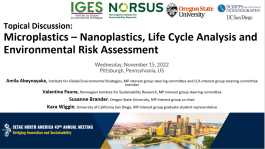
Microplastics – Nanoplastics, Life Cycle Analysis and Environmental Risk Assessment
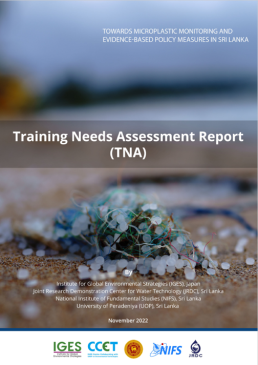
Training Needs Assessment Report (TNA): Towards Microplastic Monitoring and Evidence-Based Policy Measures in Sri Lanka
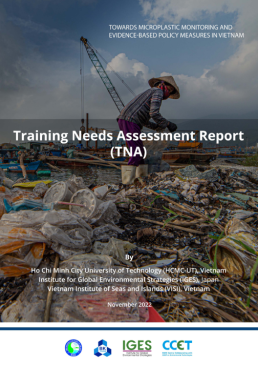
Training Needs Assessment Report (TNA): Towards Microplastic Monitoring and Evidence-Based Policy Measures in Vietnam
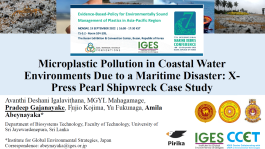
Microplastic Pollution in Coastal Water Environments Due to a Maritime Disaster: X-Press Pearl Shipwreck Case Study
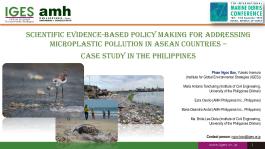
Scientific Evidence-Based Policy Making for Addressing Microplastics Pollution in ASEAN Countries - Case Study in the Philippines
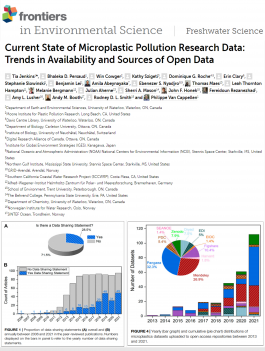
Current State of Microplastic Pollution Research Data: Trends in Availability and Sources of Open Data
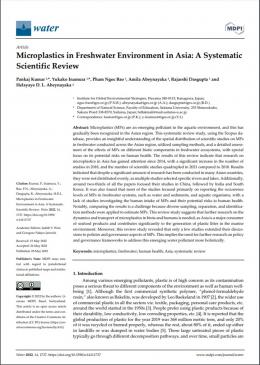
Microplastics in Freshwater Environment in Asia: A Systematic Scientific Review
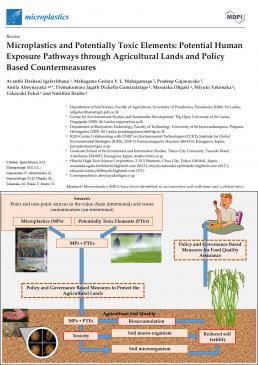
Microplastics and Potentially Toxic Elements: Potential Human Exposure Pathways through Agricultural Lands and Policy Based Countermeasures
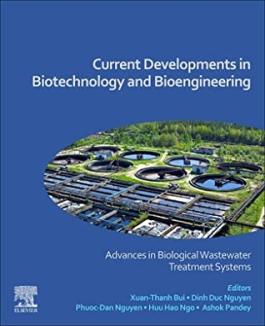
Microplastics in wastewater treatment plants
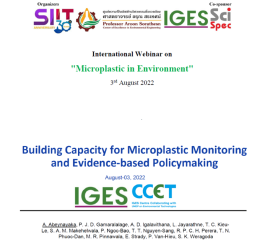
Building Capacity for Microplastic Monitoring and Evidence-based Policymaking